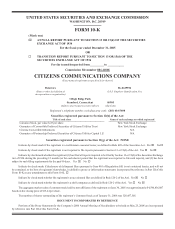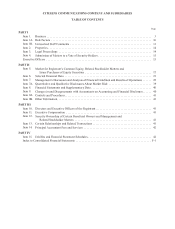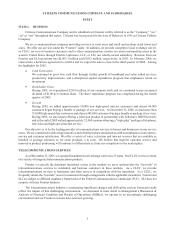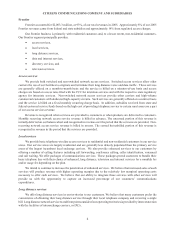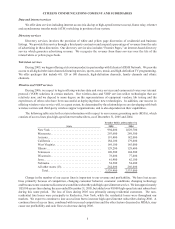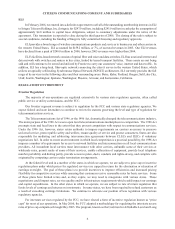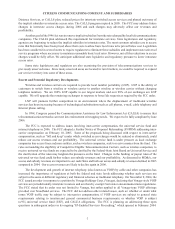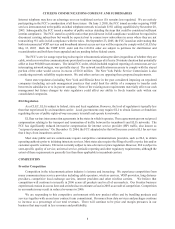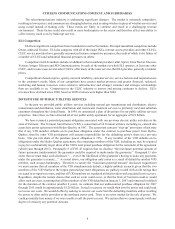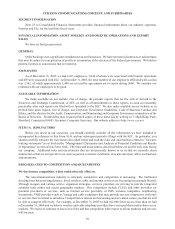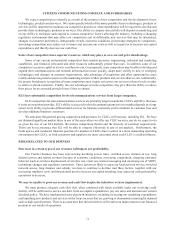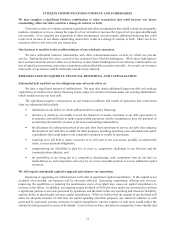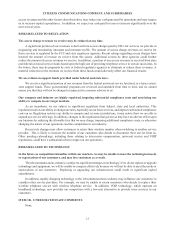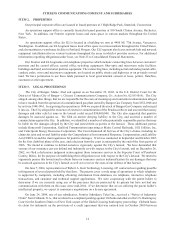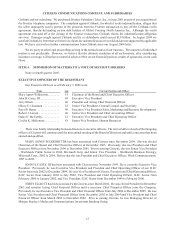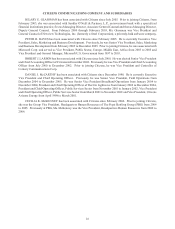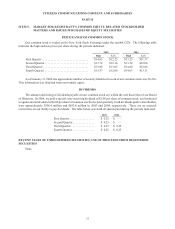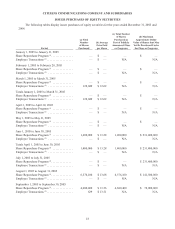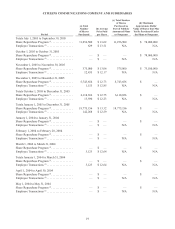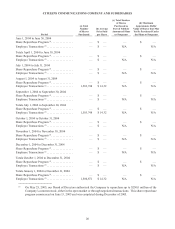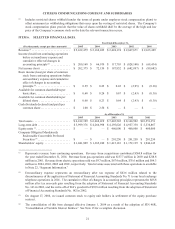Frontier Communications 2005 Annual Report Download - page 13
Download and view the complete annual report
Please find page 13 of the 2005 Frontier Communications annual report below. You can navigate through the pages in the report by either clicking on the pages listed below, or by using the keyword search tool below to find specific information within the annual report.11
CITIZENS COMMUNICATIONS COMPANY AND SUBSIDIARIES
We expect competition to intensify as a result of the entrance of new competitors and the development of new
technologies, products and services. We cannot predict which of the many possible future technologies, products or
services will be important to maintain our competitive position or what expenditures will be required to develop and
provide these technologies, products or services. Our ability to compete successfully will depend on marketing and
on our ability to anticipate and respond to various competitive factors affecting the industry, including a changing
regulatory environment that may affect our competitors and us differently, new services that may be introduced,
changes in consumer preferences, demographic trends, economic conditions and pricing strategies by competitors.
Increasing competition may reduce our revenues and increase our costs as well as require us to increase our capital
expenditures and thereby decrease our cash flow.
Some of our competitors have superior resources, which may place us at a cost and price disadvantage.
Some of our current and potential competitors have market presence, engineering, technical and marketing
capabilities, and financial, personnel and other resources substantially greater than ours. In addition, some of our
competitors can raise capital at a lower cost than we can. Consequently, some competitors may be able to develop and
expand their communications and network infrastructures more quickly, adapt more swiftly to new or emerging
technologies and changes in customer requirements, take advantage of acquisition and other opportunities more
readily and devote greater resources to the marketing and sale of their products and services than we can. Additionally,
the greater brand name recognition of some competitors may require us to price our services at lower levels in order
to retain or obtain customers. Finally, the cost advantages of some competitors may give them the ability to reduce
their prices for an extended period of time if they so choose.
ELI faces substantial competition for its telecommunications services from larger companies.
ELI’s competitors for telecommunications services are primarily larger incumbents, CLECs and IXCs. Because
it is not an incumbent provider, ELI’s ability to succeed in the telecommunications services market depends to a large
extent on its ability to provide differentiated services for business customers and to maintain its customer base and
develop additional business customers.
We anticipate that general pricing competition and pressures for CLECs will increase, including ELI. We have
not obtained significant market share in any of the areas where we offer our CLEC services, nor do we expect to do
so given the size of our ELI markets, the intense competition therein and the diversity of customer requirements.
There can be no assurance that ELI will be able to compete effectively in any of our markets. Furthermore, the
bankruptcies and weakened financial position of a number of CLECs have resulted in a more demanding operating
environment for CLECs, as both customers and suppliers are more concerned about each CLEC’s creditworthiness.
RISKS RELATED TO OUR BUSINESS
Decreases in certain types of our revenues will impact our profitability.
Our Frontier business has been experiencing declining access lines, switched access minutes of use, long
distance prices and related revenues because of economic conditions, increasing competition, changing consumer
behavior (such as wireless displacement of wireline use, email use, instant messaging and increasing use of VOIP),
technology changes and regulatory constraints. These factors are likely to cause our local network service, switched
network access, long distance and subsidy revenues to continue to decline, and these factors, together with our
increasing employee costs, and the potential need to increase our capital spending, may cause our cash generated by
operations to decrease.
We may be unable to grow our revenue and cash flow despite the initiatives we have implemented.
We must produce adequate cash flow that, when combined with funds available under our revolving credit
facility, will be sufficient to service our debt, fund our capital expenditures, pay our taxes and maintain our current
dividend policy. We have implemented several growth initiatives, including increasing our marketing expenditures
and launching new products and services with a focus on areas that are growing or demonstrate meaningful demand
such as high-speed internet. There is no assurance that these initiatives will result in an improvement in our financial
position or our results of operations.


